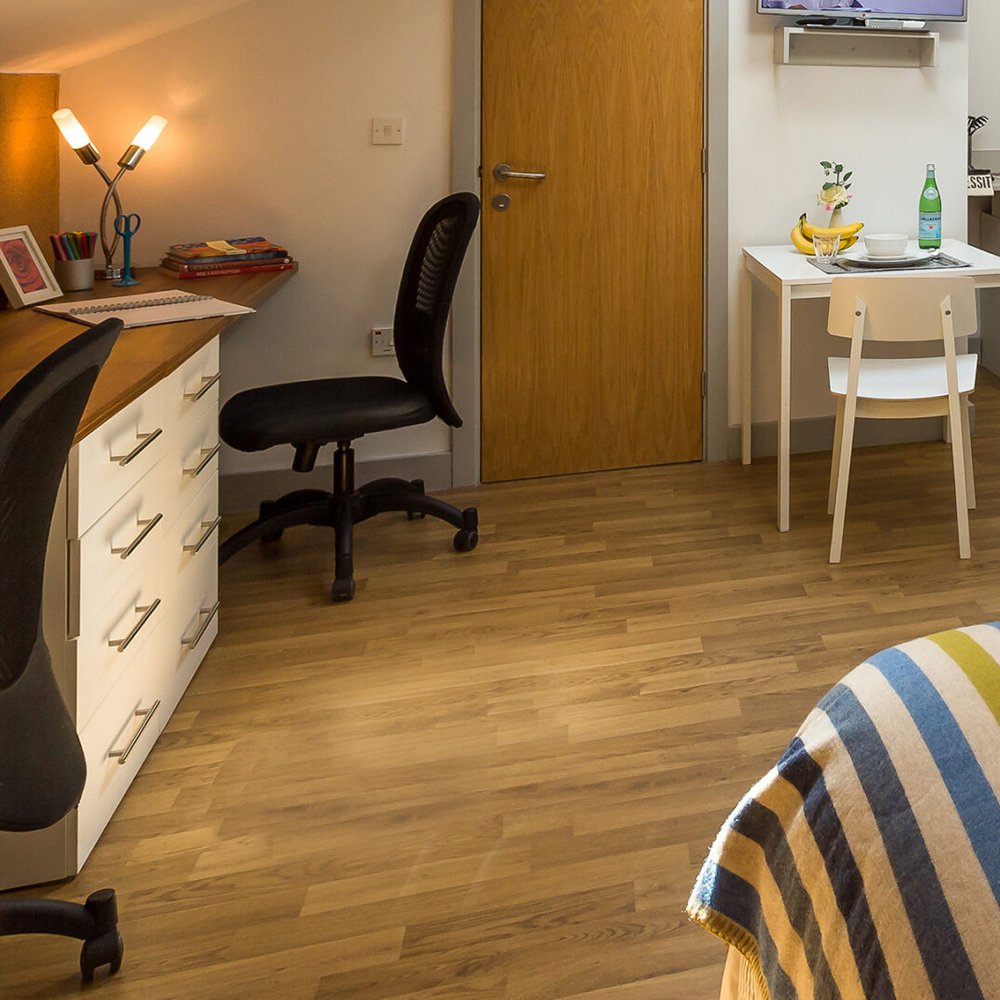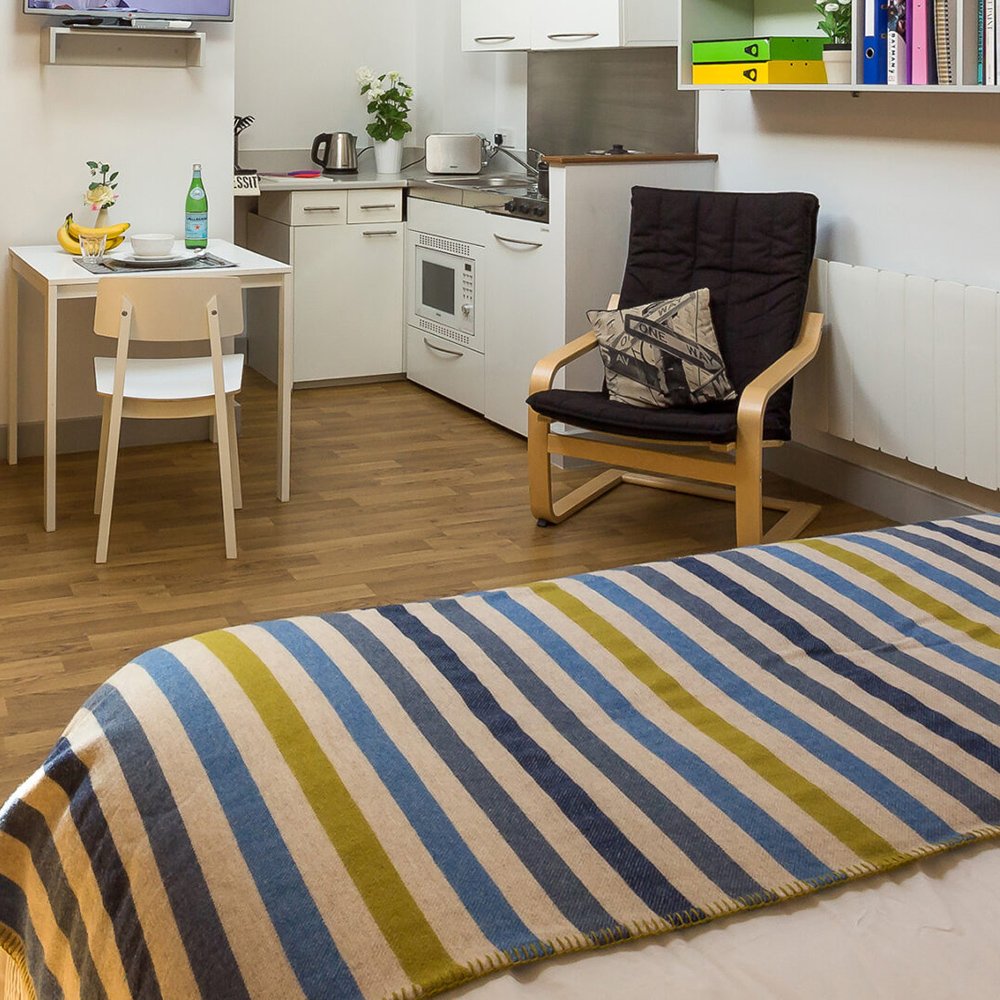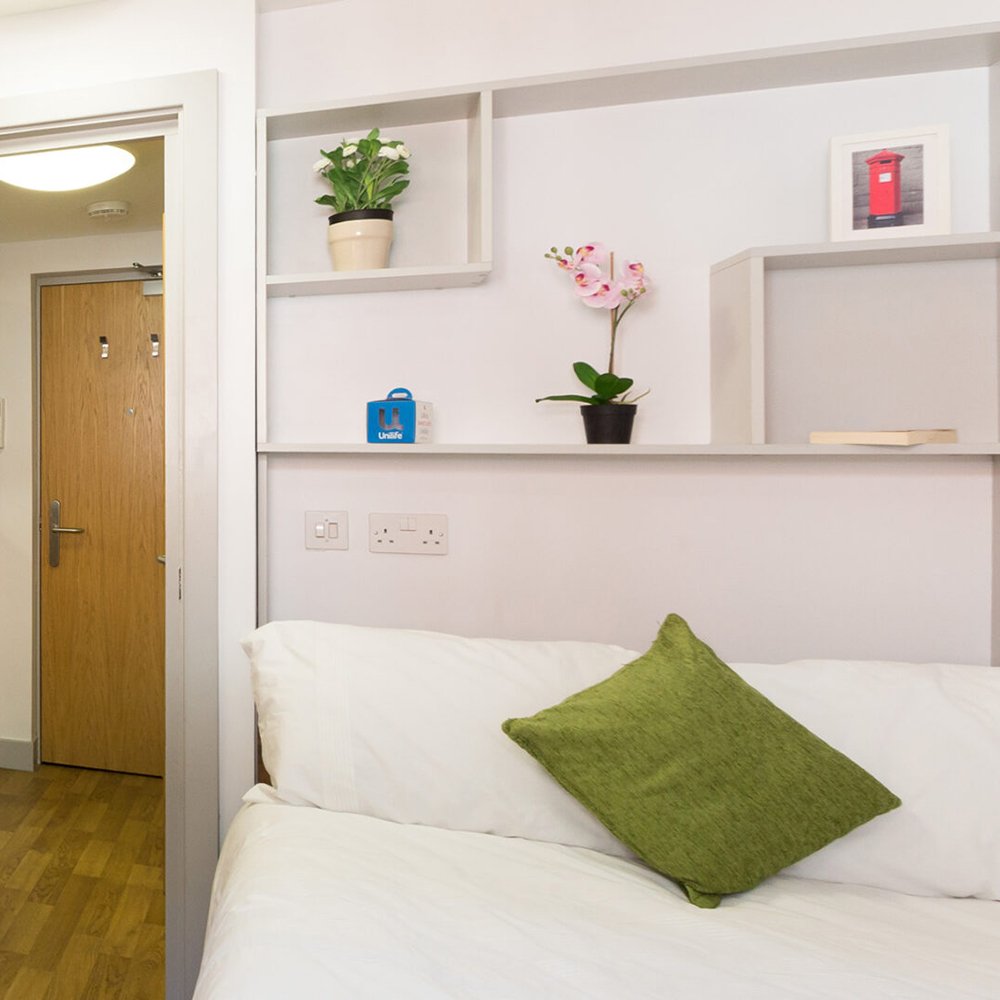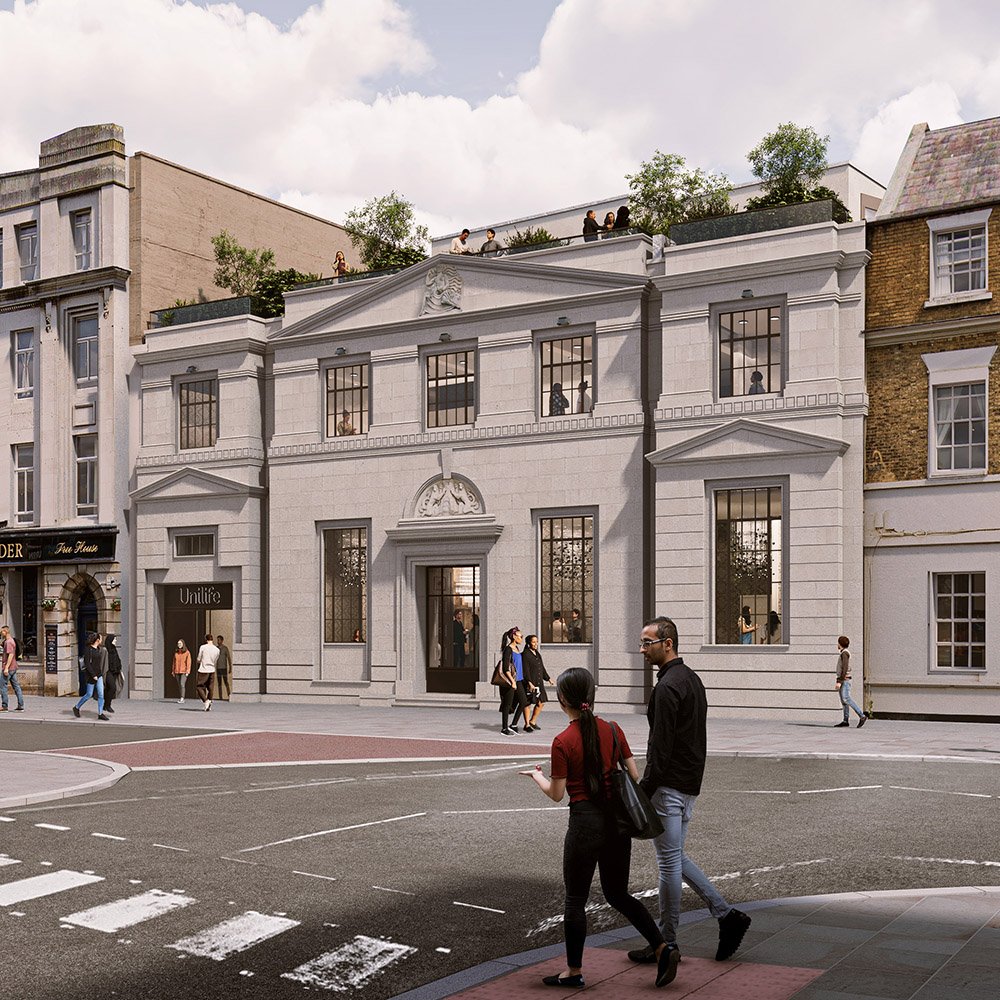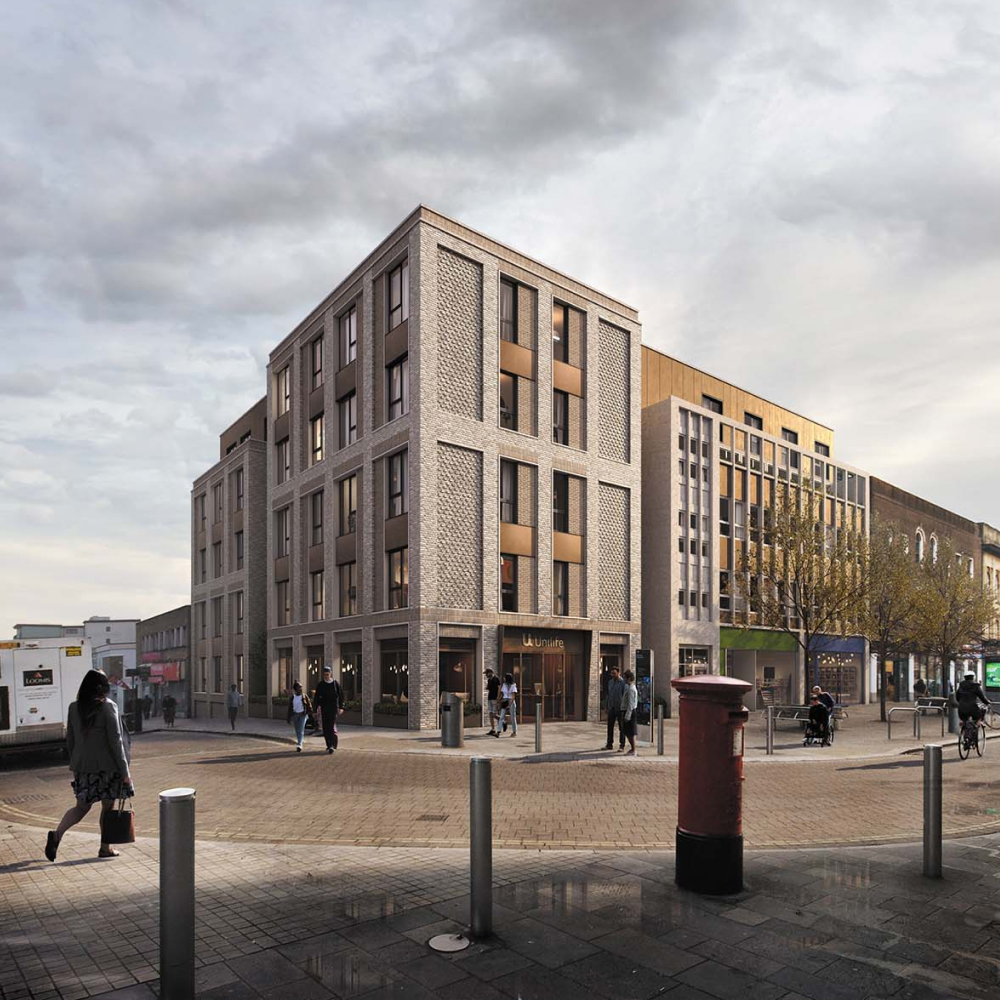Student Accommodation
St James, Portsmouth
Portsmouth
Design in details
36 luxury self-contained student studio apartments with communal socialising and amenity areas.
nilife is a developer and operator of luxury student accommodation, As the development site was in a built-up residential area, the client had a requirement that the project be completed quickly and with the minimum amount of disruption to the surrounding area. Stelling Properties worked closely with Unilife and engineered the best solution for this development and used modular construction principles to deliver the project.
The development consists of 36 luxury self-contained student studio apartments with communal socialising and amenity areas over 3 storeys completed in 2013 and located in a quiet residential street near the city centre.
St James’s Street is located in a quiet residential street right next to the Portsmouth University Quarter.
The building is also just minutes from the city centre and Gunwharf Quays and features the full range of apartment types in this development. Including Unilife Twodio apartments, standard, premium and a 2 bedroom apartment.
Larger Luxury Plus studios are included in the building, offering a very cost-effective home for couples looking to share. Unilife are one of the only private student accommodation providers who are happy to accept couples even if one of the tenants is a non-student.
Unilife actively partners with the National Code for student accommodation as well as the National Landlords Association giving peace of mind to all our residents.
